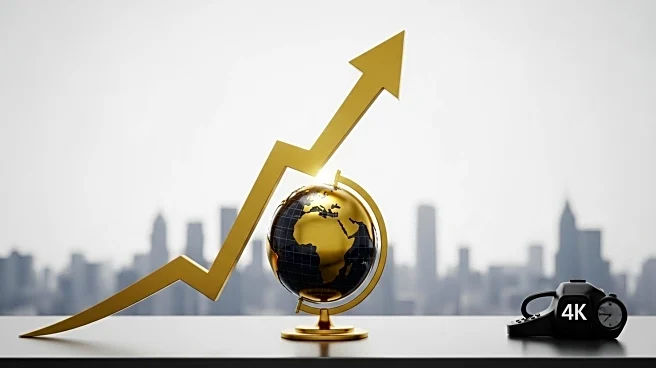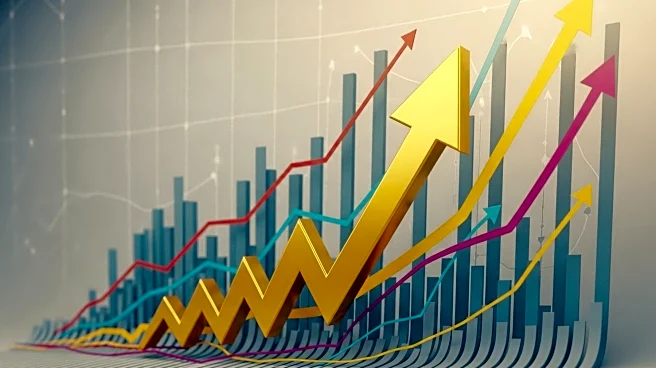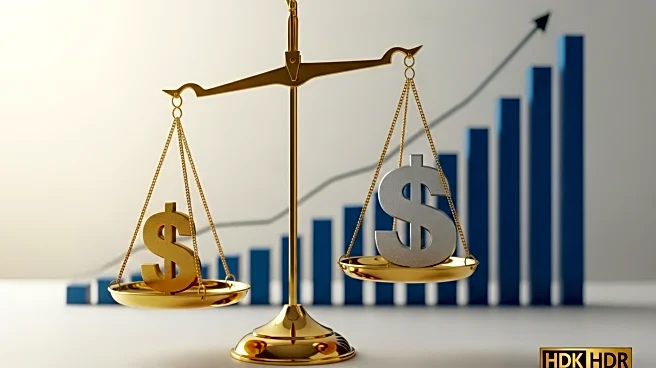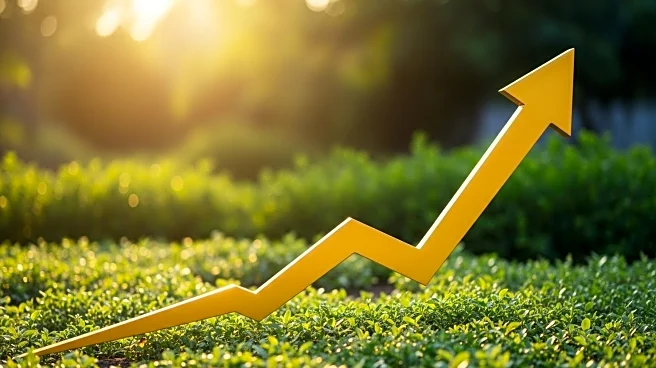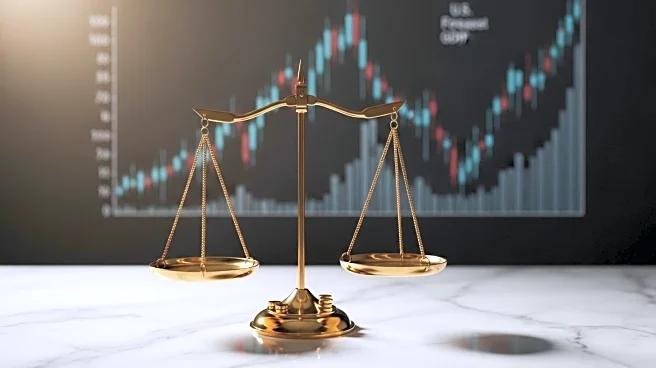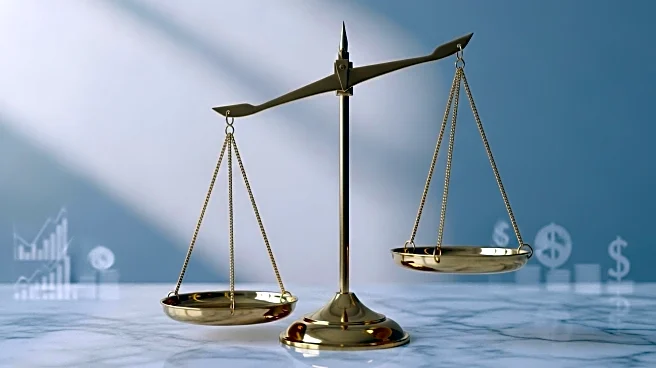What's Happening?
The U.S. economy experienced a significant expansion in the second quarter of 2025, with a revised growth rate of 3.8%, according to the U.S. Commerce Department. This figure surpasses the previous estimates of 3.3% and 3%, indicating robust economic activity despite uncertainties related to President Trump's tariff policies. The growth was primarily driven by increased consumer spending, which accounts for approximately two-thirds of U.S. economic activity. The revised GDP figures reflect a decrease in imports, which are subtracted in the GDP calculation, potentially inflating the growth rate. The data arrives amid concerns about the labor market, as recent reports indicate a slowdown in hiring and fewer jobs added than previously estimated.
Why It's Important?
The revised GDP growth rate highlights the resilience of the U.S. economy in the face of trade policy uncertainties. Strong consumer spending suggests confidence among consumers, which is crucial for sustained economic growth. However, the decrease in imports, influenced by tariff policies, raises questions about the sustainability of this growth. The labor market's sluggish performance could signal underlying economic challenges, potentially affecting consumer confidence and spending. The Federal Reserve's recent interest rate cuts aim to stimulate hiring and economic activity, but the mixed economic signals may complicate future policy decisions.
What's Next?
The Federal Reserve is expected to continue monitoring economic indicators closely, with potential further interest rate cuts projected for the remainder of 2025. Policymakers will likely assess the impact of tariff policies on trade and GDP growth, considering adjustments to support economic stability. Analysts and economists will watch upcoming labor market reports and consumer spending data to gauge the economy's trajectory and inform policy recommendations.

